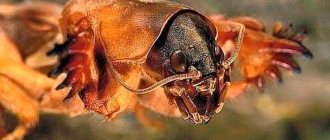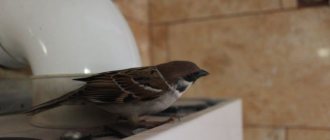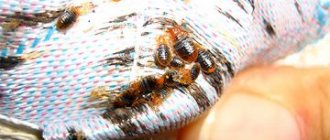Next you will learn:
- What effective and time-tested methods exist today that allow you to catch a mole in the garden, doing it quickly enough and without significant financial costs;
- The principle of operation of a pipe mole trap and what design options for this trap really give the desired result;
- How can you easily catch a mole in a bucket or in an ordinary glass jar;
- What is important to know about the correct installation of traps on the site so that their effectiveness is as high as possible;
- What to do with a mole after it is caught;
- What traps and lethal and crippling traps are most popular and is there really any point in using them (including fishhooks);
- How can you reliably protect your garden from repeated penetration of moles.
In general, catching moles can be considered a much more effective way to combat these pests in the garden than using all kinds of repellents, including sonic and ultrasonic repellers of various designs.
First of all, if you catch a mole, then a situation typical of the use of repellers will definitely not arise, when the mole simply moves to the other end of the garden and digs there (or temporarily goes to a neighboring area). In addition, by correctly using mole traps, it is sometimes possible to literally reduce the size of the mole population to almost zero, not only in one’s own area, but also in general in the immediate surrounding areas.
On a note
An important point is that catching moles is a humane way to combat these pests - compared, for example, with methods such as using poisons, pumping car exhaust gases into underground passages or flooding them with water. When a civilized person catches an animal in a live trap, he saves its life and does not maim it, but simply releases it into the wild far from his garden.
Of course, this is relevant for situations where the gardener initially intends to catch the mole and not kill it. However, today there are also flayer fishing methods, during which moles are maimed and then suffer for a long time before inevitable death. We will mention some of these barbaric methods of catching moles in a garden plot a little lower.
Now let's see what devices you can use to quickly catch all the moles in your area and how to effectively apply the appropriate designs in practice.
Do moles return to their areas and how to prevent their reappearance?
The mole is an active animal, but it cannot move long distances. Young animals, leaving the maternal area in search of unoccupied land, can move 1.5-2 km away from the place of birth, but adult moles, who have already settled somewhere, are constantly in their territory of about a hectare.
This means that if a caught mole is released a kilometer from the place of capture, then it will not return to its original area. If you release it right behind the fence, and the fence itself does not have a foundation, then with a high probability the same mole will have to be caught again.
In general, it is useful to keep in mind that preventing moles from entering an area is easier than fighting these animals later. Even if the animals are already in the garden and causing harm, they can and should be caught and taken away, but in parallel, measures should be taken to reliably protect the area: fence it off with an impenetrable foundation, even if not a powerful one, or simply dig in around the perimeter to a depth of 70-80 cm durable fine-mesh plastic mesh (with a cell size of no more than 1 cm).
Such measures will guarantee that after catching and removing all moles from the area, other animals will not enter it again. Otherwise, you will have to constantly catch moles.
As for various mole repellers, they also sometimes give good results, although they do not provide absolute protection of the area. By the way, you can also make them yourself from plastic bottles...
What to do with a caught animal?
A mole caught in a mole trap must be taken out of the area, carried away to a distance of about 1 km and released.
When freeing a captive, you need to be careful: moles have very sharp, albeit small, teeth, with which they can bite quite painfully (after all, moles are, first of all, predators). The epidemiological danger of moles has been poorly studied, and it is never possible to guarantee for sure that when an animal bites it it will not give a person some kind of bacterial “joy”.
The smartest thing to do is to take the mole out of the area directly in the mole trap, and at the place of release, simply open it and carefully shake the animal onto the ground. It is better to release the mole among thick grass or in the forest, where it has a better chance of remaining unnoticed by predators.
The release operation itself should be carried out immediately after discovery of the capture. As noted above, an extra few hours of hunger can be fatal for a mole.
Sources
- https://klopkan.ru/kroty/kak-poymat-krota-prostye-nadezhnye-i-effektivnye-sposoby/
- https://truehunter.ru/415893a-ohota-na-krota-izgotovlenie-lovushek-vyibor-primanki-sovetyi-opyitnyih-ohotnikov
- https://peschanoepans.ru/samostrel-krota-chertezh/
- https://krot911.ru/kroty/kak-izbavitsya-ot-krotov/kak-pojmat-krota-v-ogorode.html
- https://pxim.ru/krotolovka-svoimi-rukami/
- https://krot911.ru/kroty/kak-izbavitsya-ot-krotov/krotolovka-iz-plastikovyx-butylok-svoimi-rukami.html
- https://krot911.ru/kroty/kak-izbavitsya-ot-krotov/krotolovka-truba.html
[collapse]
How to catch a live mole?
As a rule, getting rid of an annoying animal is not easy. He is so unpretentious that he easily puts up with the proximity of both humans and pets. He is not afraid of either poisoned baits or most of those primitive means that are used to scare him away. Loose soil full of earthworms (read what moles eat in the garden) is an ideal habitat where he will always strive to return. Therefore, catching a mole in the garden is the most reliable way to part with it forever.
Those who have ever wondered how to catch a mole probably know the simplest folk remedies:
The method that allows you to catch a mole in your summer cottage with the help of two shovels is more reminiscent of a gambling hunt, requiring not only skill, but also patience. To implement it, you must first track the movement of the animal through the tunnel - when it is even possible to notice it. Having determined the location of the object, two shovels are quickly stuck across the tunnel so as to block the passage on either side of the animal. After this, the hole is dug up, removing the troublemaker.
It is made using an ordinary bucket or a large glass jar. It is installed in an already inhabited mole tunnel, or rather, under it. Naturally, this requires first excavating the tunnel and then covering it again.
Such traps are the cheapest and easiest to manufacture. In addition to moles, they allow you to catch small rodents, which often use ready-made tunnels for their purposes.
mole pit trap from a 3-liter jar
To catch a mole in a jar, it is placed under the tunnel so that the upper rim of the neck is at the same level as the lower edge of the mole passage. Moving along its corridors, the blind animal, of course, does not look at its feet. And an unexpected failure, most often, is fatal for him.
Having fallen into the substituted container, the mole will no longer be able to get out. All that remains is to regularly check the traps, removing the animals stuck in them. Unfortunately, shrews and other useful inhabitants of summer cottages often get caught in such devices, or earth is simply poured in.
Made from scraps of ordinary water pipes or plastic bottles. In the first case, doors are attached to a workpiece of suitable diameter on both sides, held on special hinges and opening only inward.
In the second, several bottles are inserted with their necks into one another. The necks are pre-cut to obtain peculiar petals that easily move apart when pressed in a certain direction.
homemade mole trap made from plastic bottles
The prepared trap is placed horizontally at the bottom of the tunnel. The mole, pressing its head on the door or petals, easily gets inside. But he can no longer get out from the other side - the passage from the inside does not open.
factory-made mole trap-pipe
In fact, this does not always happen. And all because the mole, moving along the path, moves a small lump of earth in front of itself. Usually it is this lump that falls into the trap first. Once stuck, it prevents the door from opening again, and the animal safely bypasses the obstacle from above or below.
Catch a mole on a hook
Some “craftsmen” try to catch a mole on a hook, like a fish. To do this, take a large fishing tee and tie it to a metal cable. The hook is lowered into the hole and they wait for the animal to run into it. This barbaric method is not only ineffective, but also causes the animal to suffer for a long time before death.
To understand what the process looks like visually, watch the following video.
A little about humanity
Live traps are often advertised as the most humane and environmentally friendly way to catch moles. But the caught animal can remain inside the live trap for no more than six hours. The metabolic features of his body are such that after this period he will no longer survive without food. This circumstance nullifies all claims about the humanity of such devices.
Mole trap made from a plastic bottle
So, the first type of trap is a kind of analogue of the commercially available pipe mole trap, but the “locking” element in it works on a slightly different principle.
The photo below shows a mole trap-pipe for comparison:
The mole easily climbs into such a trap, but cannot get out of it. It is implemented as follows:
Take a plastic bottle with a capacity of 1.5 liters - it will be the basis of the design
It is not worth taking smaller or larger bottles, because a liter bottle is too narrow, and it is difficult for the animal to climb into it, and a two-liter bottle, on the contrary, is too wide, and often does not fit into the animal’s path; Either the bottom or the neck of the bottle is cut off - it doesn’t matter. The main thing is to make a free entrance on one side, and on the other there should be a dead end; Then take a second bottle of the same size, which, in fact, will clog the mole
The dense part of the neck is cut off (on which the cap is screwed), but a “funnel” is left, and the bottom is also cut off (you can even cut off the bottom half of the bottle); In the second bottle, 10-12 longitudinal cuts are made on the tapering part until it becomes a flat part. The result is a kind of long “petals”; After this, the second plastic bottle is inserted with its narrowed part into the open passage of the first, and the junction of the two bottles is secured with tape.
That's all, the mole trap is ready. If you place it in a mole passage, the animal will make its way into it along the second (entrance) bottle: under its pressure, the petals will easily bend and do not prevent it from crawling along the joint line, thereby ensuring unhindered access to the main bottle.
After the animal passes, the petals close again. Here he reaches a dead end, turns around, tries to move back, but runs into narrowed petals that he can no longer move apart. The mole is caught.
This mole trap made from plastic bottles is easy to make with your own hands in about 10-15 minutes.
Not everyone takes into account that this mole trap can be easily improved, increasing its efficiency by approximately 2 times, if both the bottom and the top of the main bottle are cut off, and then “valves” are installed on both sides, allowing the animal to only pass inside. In this case, you won’t have to guess from which side the mole will approach the mole trap in its underground passage. Moreover, as practice shows, if there are several animals on the site, a “double” trap can catch two moles at once.
The video at the end of the article shows the process of making a mole trap with your own hands.
However, it is important not only to make the mole trap correctly, but also to install it correctly on the site, since the final result of its work also largely depends on this
Krotolovka
Have you thought about how to get rid of moles in your garden? A standard mole trap is perfect for this purpose. Just a few decades ago they were quite primitive, but with the development of technology these devices have improved significantly, becoming even more effective. You can buy such a thing at most hardware stores that sell mousetraps. By the way, these two designs are quite similar in appearance and functionality, however, the mole trap is slightly larger in size.
Looking for a way to get rid of moles? Self-made traps can help you with this. To do this, you don’t have to resort to various tricks, and the material you can use is ordinary wire, which just needs to be twisted correctly. An analogue is a plastic trap, which is made from an ordinary bottle:
- First, we make the “body” of the pipe by cutting off the bottom and top of the bottle.
- The other two containers will require the tops to be cut off.
- The neck itself must also be cut off.
- In the remaining part we cut ribbons that are tightly driven into the pipe.
Such a mole trap is installed in holes through which animals move. Crawling through such a trap, the animal will easily push the ribbons apart, but will not be able to get back out.
Wearing a mole trap
It is recommended to wear mole traps in a bent ring made of thin wire. This is much more convenient than using some kind of bag where they will constantly cling to each other. In addition, you will have your hands free if you hang the wire, for example, from a belt. In this way, you can set traps and at the same time remove prey from old mole traps.
Additional equipment
To install mole traps, a regular hunting knife is best suited. It should have a long and wide blade, as well as a wooden handle and a rounded end. Such equipment is perfect not only for cutting out excess vegetation, but also for digging the ground. A wooden handle will serve you well for pressing installed mole traps into the soil.
Best time to hunt
You can start hunting moles as early as June 20, when the young animals have grown a little and begin to go hunting. The season ends in late autumn, when the first night frosts strike and the animal goes into hibernation. You can resume hunting immediately after snow falls, but most moles appear in the summer.
During the entire hunting season, you will need to place a large number of traps over a fairly large area, which must be divided into small areas. After the moles stop falling into traps, you can safely move to another place.
How to completely get rid of moles in garden plots
Some gardeners are annoyed by moles to such an extent that they decide to take extreme measures to physically destroy them.
They begin to use poisonous chemicals, which, along with their immediate purpose, destroy beneficial earthworms.
Someone (most likely fishermen) even throws their gear into the holes...
Natural enemies
Your pets can help you in the fight against moles; for example, cats and dogs (especially dachshunds and fox terriers) are considered to be quite dexterous and skillful hunters of these underground pests. Therefore, take your pets to the dacha more often and let them get their own food in the wild.
Video: Dachshund fights moles (at least he tries)
Is it worth protecting the site in winter?
There are two really very reliable ways to prevent moles from entering your summer cottage:
It is clear that such work is very labor-intensive and expensive, but in general it is usually carried out not only to combat moles, but also to improve the area (to install a fence, prevent flooding or soil movement). Therefore, if there is an opportunity to do this, then you need to do it: when the neighbors cry about the fact that their entire plot is dug up by moles, you will already forget what the traces of the vital activity of these animals even look like.
In winter, the mole does not hibernate, becoming only slightly less active than in summer, but in general it digs many new holes due to lack of food. This means that with some probability the animal can enter the area at this time of year. Consequently, if in summer and autumn certain folk repellents have really proven themselves, then in winter they should also be left on the summer cottage, and, if necessary, updated regularly.
In addition, it is in winter that it is easiest to catch a mole in the garden using a shovel or a live trap.
If you have your own experience fighting moles in your country house or garden, be sure to leave a review at the bottom of this page - perhaps it will help someone make the right decision when choosing this or that product.
Moles and shrews are active animals. Their benefits in the garden are enormous, because they:
The harm is that the animals form voids in the ground, digging labyrinths of wide passages and damaging the roots of plants, fruit plants, and trees. They lose contact with the ground and dry out.
Where can I buy a mole trap and how much does it cost?
Today you can easily buy a pipe mole trap in online stores. Many particularly enterprising citizens have mastered making them with their own hands on a semi-industrial scale, and today there are both imported high-quality traps on sale for 400-500 rubles apiece, dismountable and very convenient, as well as handicraft products, somewhat clumsy and not so pleasant to handle, but they cost almost twice as much.
To cities far from Moscow, some online stores deliver such devices by mail or transport company.
For one plot of up to 10 acres, it is often enough to buy one mole trap-pipe. With the right approach, all the “local” moles are caught in it quite quickly, and in a few days you can catch all the pests on the site (while not forgetting that they may be replaced by new moles after some time).
Signs of moles in the garden
If hills of soil are found on the site and part of the crop is eaten, do not rush to blame the mole for these problems. Before removing moles from the garden, it’s a good idea to refer to the list of animals that can create a similar picture:
• Moles only dig tunnels; plants or their roots will not be touched. If traces of eating are visible, mole holes are used by rodents.
• Note the nature of the mound near the entrance to the burrow. The mole will leave a mound in the form of a hill, similar to the crater of a volcano
The gopher will leave a mound shaped like a horseshoe. If mice are attracted to the garden, there will be no mounds or slides of soil at all, but you will find visible passages near the surface.
What does a mole eat in the garden?
The mole is the most common predator that loves to feast on insects. He will quite successfully cope with a medium-sized snake or frog or mouse if they end up in his hole. Therefore, there is no need to attribute the eaten plant roots or tubers to the animal, although it is often confused with rodents. And before you fight moles in the garden, you should assess the real harm.
But if the animal has chosen your area, then it will feed there. The answer to the question of what moles eat in the garden will be the same insects. Wasps, mole crickets, flies, ants and larvae are all mole food. The problem is that earthworms are also among our favorite delicacies. And he can eat them even in winter: the temperature in the hole is higher, a musky aroma is heard, and this attracts the worm.
Benefit or harm?
Moles can not only harm the gardener, but also be beneficial. For example, they actively eat mole crickets - the fierce enemies of gardeners. They can significantly reduce the population of various beetles, wireworms, caterpillars of cabbage butterflies and other pests on your site, which can cause great damage to the crop. These mammals also destroy baby rats and mice. Thanks to their keen sense of smell, they quickly find rodent nests and are able to destroy a brood in one go. Another benefit is soil aeration when digging underground passages: loosened soil is well saturated with moisture and has excellent air permeability, which is beneficial for the root system of all plant crops.
However, entire colonies of moles in the garden are dangerous for plants. The harm from moles on a personal plot is much greater than the benefit. 1-2 individuals will not cause serious damage to the crop, but these predators do not remain alone for long. Where there is a female and a male, a litter of moles will soon appear. Finding moles with babies is very difficult, it is almost impossible in large areas. Some gardeners fill the passages with water, but such measures are useless, since in case of danger the family will quickly find a safe dead end.
Here are a few consequences of moles infesting a garden.
- In search of food, a female with a male and a grown brood can turn over up to 5 acres of land on a site in a day. As a result, a well-groomed area loses its aesthetics due to the appearance of numerous passages and piles of soil.
- One adult mole is capable of digging tunnels with a total length of 15-20 m or even more in a day. While making passages, the animals damage various obstacles that they encounter along the way: rhizomes of trees and shrubs, wires, sewer systems, plastic water pipes. Damaged roots of plants planted in the garden quickly dry out and they stop feeding the plantings. As a result, plant crops may become sick (with minor injury to the root system) or even die.
- Moles are capable of destroying almost all earthworms on the site. This can cause damage to the gardener: the fact is that the worms eat nematodes - microscopic worms that infect the rhizomes of plantings on the site. Due to the lack of “raincoats”, the nematode will actively develop, the soil will become poor, and the plants may soon die.
- In the process of digging tunnels, predators mix the infertile lower soil layer with the surface nutrient layer. Because of this, the soil becomes poor, and plants may not receive a lot of different fertilizers.
Other types of traps, humane and inhumane
A pipe trap works on the same principle as homemade traps made from plastic bottles. Only in it the animal pushes the door that easily opens inward and slams behind it, penetrates the pipe, but cannot open the same door from the inside.
There are also inhumane traps for moles that simply kill the animals:
Some people make them with their own hands, or buy them ready-made. However, before using them, think: why mercilessly kill warm-blooded animals just because for some reason they bother you. And even more so, you shouldn’t kill animals just because you’re too lazy to catch them alive and take them out of the area.
The effectiveness of all these lethal traps is approximately the same and does not differ from the effectiveness of homemade live traps. You shouldn’t expect that if you didn’t catch a mole with a properly made structure from a plastic bottle, then the trap will certainly kill it. It makes more sense to figure out why the trap turned out to be ineffective (wrong choice of move, errors in placement or manufacturing), correct the flaws and catch the pest alive.
In any case, no matter what mole traps are used, without effective measures to protect the site, the results of their use will be temporary, and you will have to constantly catch animals, worrying about a damaged harvest. Therefore, you should first take care of protecting the area from the penetration of moles, and only then catch the animals. Read about how to effectively protect your area from moles in other articles on our website.
If you have personal experience using homemade mole traps, be sure to leave your feedback in the comments field at the bottom of this page.
Interesting video: making a mole trap-pipe with your own hands
Using a mole trap-pipe to combat moles on the site
How to quickly catch a mole in the garden using simple means
Review of the most effective mole traps
Remedies for moles:
Reliable design, can be installed instantly, operates in the tunnel on both sides, and is safe for pets.
A simple, inexpensive and yet very effective mole trap.
Highly effective sound-vibration mole repeller, coverage area up to 750 sq. m.
Press traps
All means of catching moles can be divided into two types:
- Live traps that allow you to catch an animal without harming it;
- Lethal traps (traps, snares of various types, fishhooks, etc.), either immediately killing the animal upon capture, or injuring it so severely that the likelihood of its subsequent survival is minimal.
The results of using these types of traps show that the effectiveness of live traps is the same as the effectiveness of means that lead to the death of moles. The question of using one or another type of device ultimately comes down to whether the owner of the property will be too lazy to constantly take the caught animals outside the garden and release them into the wild.
Based on humane considerations, traps and snares are significantly inferior to live traps, and if you can rid the garden of moles without killing the animals, then it is better to choose the gentle option. The use of devices that kill moles is hardly justified killing.
Below, the word “traps” will primarily mean live traps, into which the mole is caught alive and unharmed. However, we will also look at various traps - in order to show with what sadistic methods today some summer residents are trying to fight nature on their plots.
Also, sometimes standard mouse traps and crushers are used against moles. If the mouse pulls the bait on the guardhouse to release the mechanism, the mole simply crawls onto the guardhouse and lowers it with its body.
In the case of a competent approach, traps are practically no different from live traps in terms of efficiency and ease of use, however, the use of such lethal means to exterminate moles can be considered to a certain extent senseless cruelty.
Is it worth catching moles with fish hooks?
There is another cruel way to catch a mole - catching it with a fishing hook. The principle is simple: a small hole is made in the arch of the passage, into which a fishing line with several fishing hooks is lowered (usually tees are used to be sure), the end of this fishing line is tied next to a metal pin driven into the ground or simply to a strong stick lying on the ground.
The mole, going along its course, runs into a fishing hook and it digs into the body, piercing the skin. The animal cannot free itself and tugs on the fishing line, which is visible on the surface (sometimes a bell is tied to the pin, which at that moment begins to ring). After this, the gardener can only dig out the passage with a garden shovel and pull the struggling mole to the surface directly by the fishing line.
During such manipulations, the mole's side or abdomen is sometimes literally torn apart with a hook. And it is quite obvious that the knackers who use such a means of capture will definitely not stand on ceremony with the animal after it is caught.
There is an even more sophisticated way of mocking a mole - using the same fishing hooks with earthworms pre-attached to them. The animal will try to eat such bait, and the hook will stick into its mouth or throat.
Let us only add here that in terms of efficiency and labor intensity, catching a mole with a hook is comparable to using live traps. But if adequate gardeners try to save the life of the animal and not injure it, then sadists, of course, will be more interested in figuring out how to catch a mole with fishing hooks.
Prevention measures
To prevent moles from infesting your garden, you need to listen to the advice of experienced gardeners and protect the area on your own.
It is important to take a responsible approach to preventive measures if work is planned ahead to improve soil fertility:
- construction of a compost heap;
- preparing a manure pit;
- mulching with cut grass.
Such organic fertilizers are loved by earthworms, which moles love to eat.
It needs to be dug into the ground to a depth of 50-60 cm, and the fence should protrude above the surface of the ground by about 40-50 cm (since in exceptional cases moles can go to the ground to overcome a deep obstacle). As a fence, you can use slate sheets, thick linoleum or other materials, the main thing is that they are durable and can withstand the powerful claws of moles.
If such protection has been thought out on a land plot, but moles still appear, you should immediately begin to scare them away to minimize the damage from their activities. For better results, it is recommended to use several types of repellers at once, for example, ultrasonic and aromatic. You can also attract a cat - moles can sense a domestic predator and leave the garden.
Repellent devices
Since it is not always possible to catch a mole, you can use various devices that will help drive it out of the territory. There are many repellent devices. They help fight shrews and moles. The simplest repellent device is a pinwheel made from a plastic bottle. In order to make this device, you will need a piece of water pipe. You also need to prepare a plastic bottle. Pieces of pipes must be driven into the ground. In this case, you need to make sure that the lower end is below the mole's passages. A pin is inserted into the top of the pipe. Its optimal diameter is 8-10 mm. The pin is fixed in the center of the pipe. To do this, use a wooden plug. A hole is burned at the bottom of the bottle. This is done using a metal pin. It is necessary to make slits on the bottle. They should be located along a continuous line. The plastic bends along the contour. There should be exactly four folds. The bottle will rotate with any blow of wind. In this case, resonance of the hollow pipe is noted, which creates noise. It has been established that moles are very afraid of him. For an area of up to 30 acres, about 10 such devices are enough.
Lethal means
In the fight for territory, you can also resort to the use of pesticides. However, in this case, it will not be possible to exterminate the animals by poisoning the bait due to the fact that moles feed on insects and bugs.
The best option is to use substances and preparations that are distributed in the air space of the soil and act through evaporation.
- Calcium carbide. The use of a solid substance is due to the calcium phosphide and acetylene contained in the composition, the vapors of which are toxic to living beings (including the owner of the site). To achieve the result, you need to place several weighty pieces of carbide in a plastic bottle and pour in water, and place the container itself with the neck inside the underground passage. As a result of a chemical reaction, accompanied by active seething, gas will be released, which will cause significant damage to the health of the animal.
- "Alphos the mole." The principle of operation is approximately the same as in the case of carbide. The product is a tablet with aluminum phosphide. This poison has a destructive effect on both animals and insects. “Alphos mole” is buried in the ground, and when exposed to humidity, toxic gas is released.
- "Detia". A drug intended not to exterminate living creatures, but to repel them. During the use of granules, it is not a poisonous gas that is released, but evaporation of essential oils, the smell of which is unpleasant to moles.
- "STOP-Mole." A specialized product for exterminating earth-moving animals. Presented in the form of tablets that need to be buried in the mink area. It is best to carry out manipulations in the middle of daylight hours when the pest is hibernating.
- Green house ANTICROT. The chemical has a completely different principle of action. Acts as a bait, which contains food elements that enhance the perception of the drug as a source of nutrition. The damaging substance is bromadiolone, which contributes to the deterioration of the blood clotting of an animal or insect. As a result, after a few days the mole rat dies.











